AITA for telling my MIL she can never visit us or my SIL again?
In the midst of a bustling family life, sometimes the lines between protection and conflict become painfully clear. The story centers on a tense moment when the narrator—fed up with her overbearing mother-in-law, Pat—draws a hard boundary for the sake of her new family. With a double condo townhouse inherited from her grandmother, the narrator’s life had recently taken a positive turn when she opened her home to her sister-in-law,
Alice, a resilient single mom who’s raised her two boys against all odds. Yet, even in a setting of second chances, old wounds and harsh words can resurface unexpectedly. The conflict ignited when, during a visit by Pat to see Alice, a minor mishap turned into a major outburst. A 7-year-old, playing outside and accidentally knocking over a planter, became the unwitting target of Pat’s fury. Not only did she scream at him,
but she also hurled a racial slur at the mixed child—a moment that left the narrator infuriated and determined to protect her family at all costs. With emotions running high and trust hanging in the balance, the narrator declared that Pat could never visit their home again—a decision that would soon split family loyalties and spark heated debate.
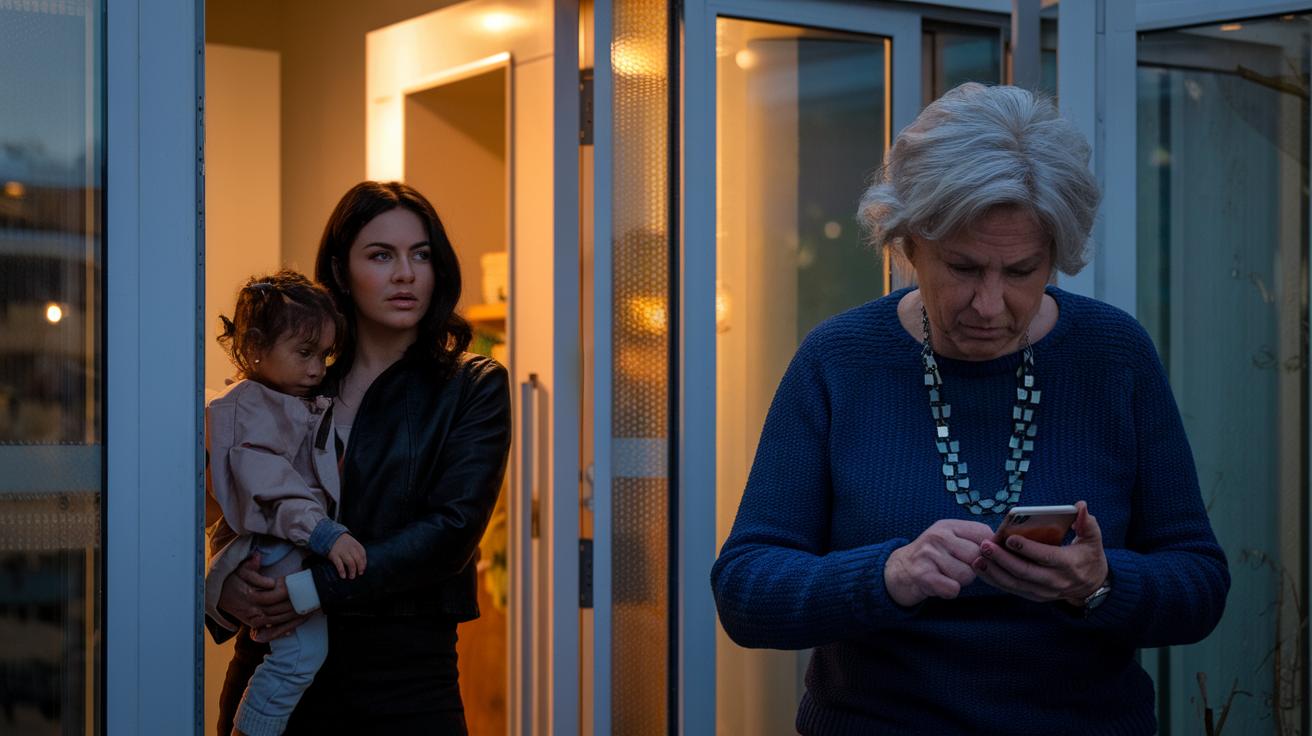
‘AITA for telling my MIL she can never visit us or my SIL again?’
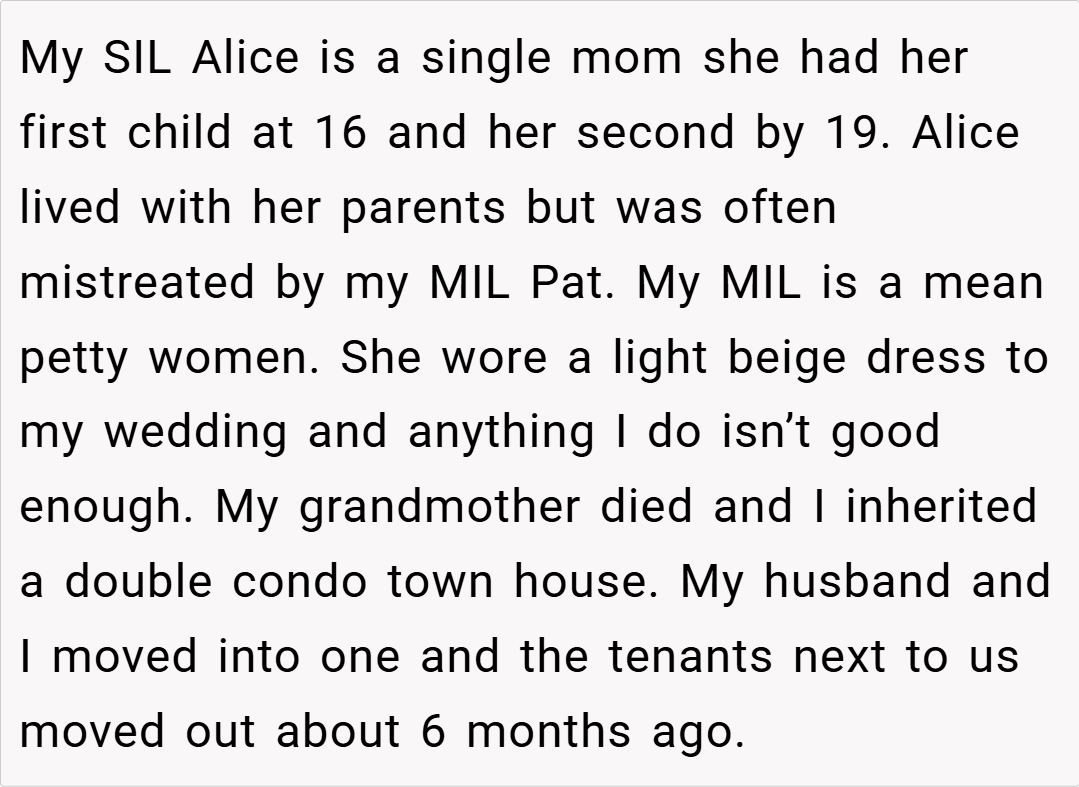
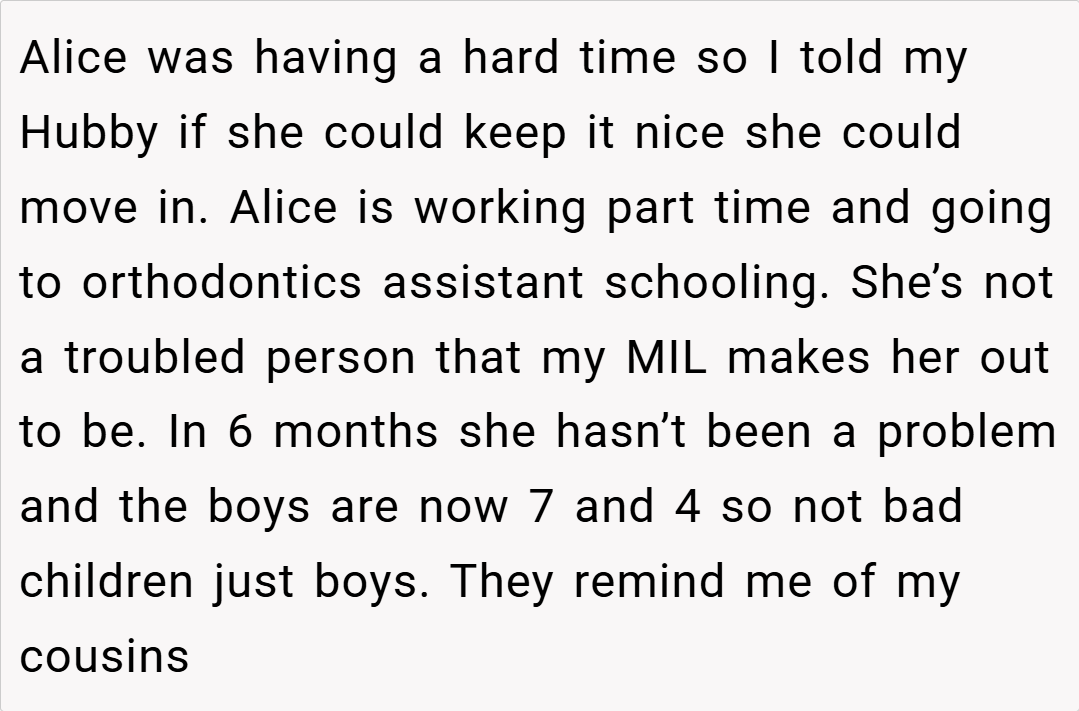
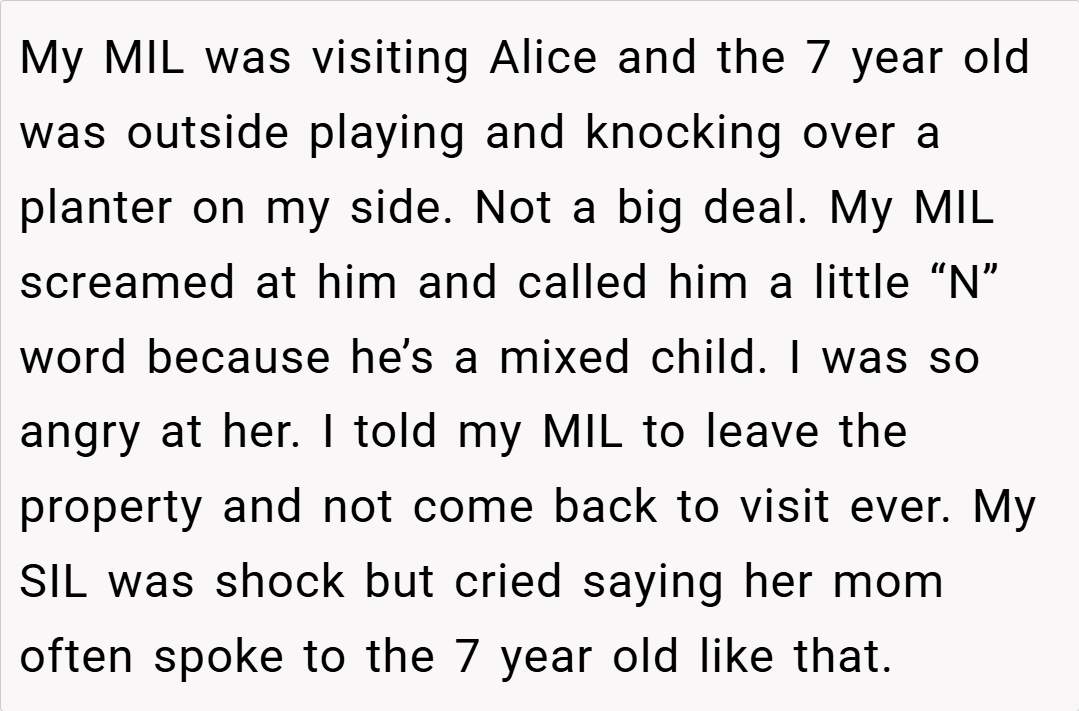
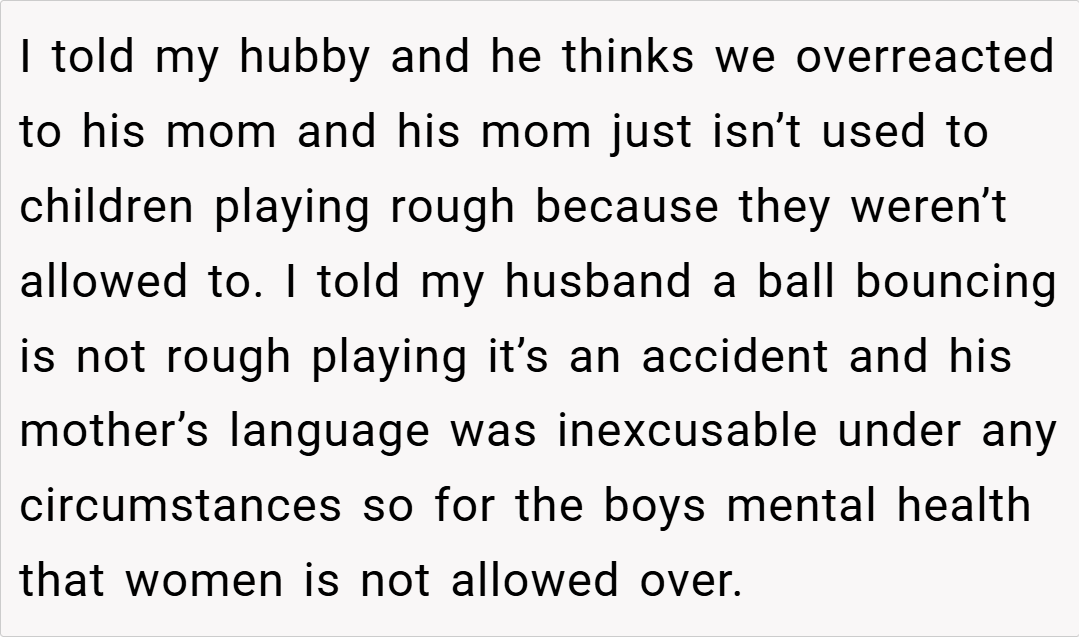
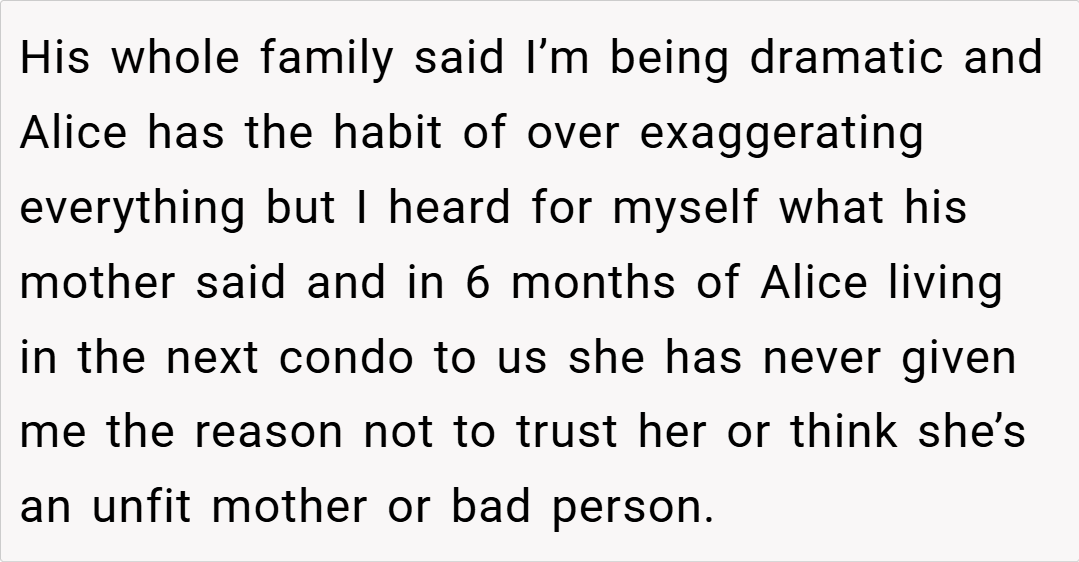
When family conflicts reach the public arena, the stakes become much higher than mere words. In this case, the narrator’s decision to ban her mother-in-law from visiting is rooted in a firm stand against unacceptable behavior. The incident, where a minor accident turned into a racially charged outburst, highlights a broader issue: the need for clear boundaries in family relationships.
It is essential for any family member to feel safe and respected, particularly in the presence of children. This episode is a vivid reminder that when a trusted figure crosses a moral line, decisive action is warranted. Delving deeper, the underlying problem here extends beyond the immediate hurt caused by a single racial slur. It is about the cumulative effects of a lifetime of mean-spirited behavior and an inability—or unwillingness—to adapt to a changing family dynamic.
The narrator’s choice to welcome Alice into her life, offering a stable living environment and a chance for fresh beginnings, contrasts sharply with Pat’s outdated, prejudiced views. Such behavior not only harms the child directly targeted by the insult but also undermines the trust and unity essential for a healthy family environment. In light of these issues, experts emphasize the importance of addressing toxic behavior head-on.
According to Dr. Laura Markham of Aha! Parenting (https://www.ahaparenting.com/), “When we model consistent, compassionate behavior, we lay the foundation for our children to feel secure and valued.” Dr. Markham’s insight underscores that protecting a child’s mental and emotional well-being sometimes requires setting non-negotiable boundaries, even if it means alienating a family member.
The decision to cut off contact with a loved one is never easy, but it can be a necessary step toward preserving the integrity and safety of one’s immediate family. Finally, it is worth noting that this incident reflects a larger societal issue: the normalization of racist language and behavior within personal relationships. While some family members may dismiss such incidents as overreactions or misunderstandings,
the harm inflicted by such words can have long-lasting effects, particularly on impressionable children. When those we trust to care for our loved ones fail to uphold basic standards of respect and decency, the repercussions extend far beyond a momentary lapse. In such cases, the call for accountability is not just justified—it is imperative.
Here’s the feedback from the Reddit community:
Redditors are unanimous in their condemnation of Pat’s behavior, with many labeling her actions as not only racist but also indicative of a deep-seated pattern of abuse and neglect. While some criticize the narrator’s husband for downplaying the incident, others applaud the firm stance taken to protect the child and preserve the family’s integrity.
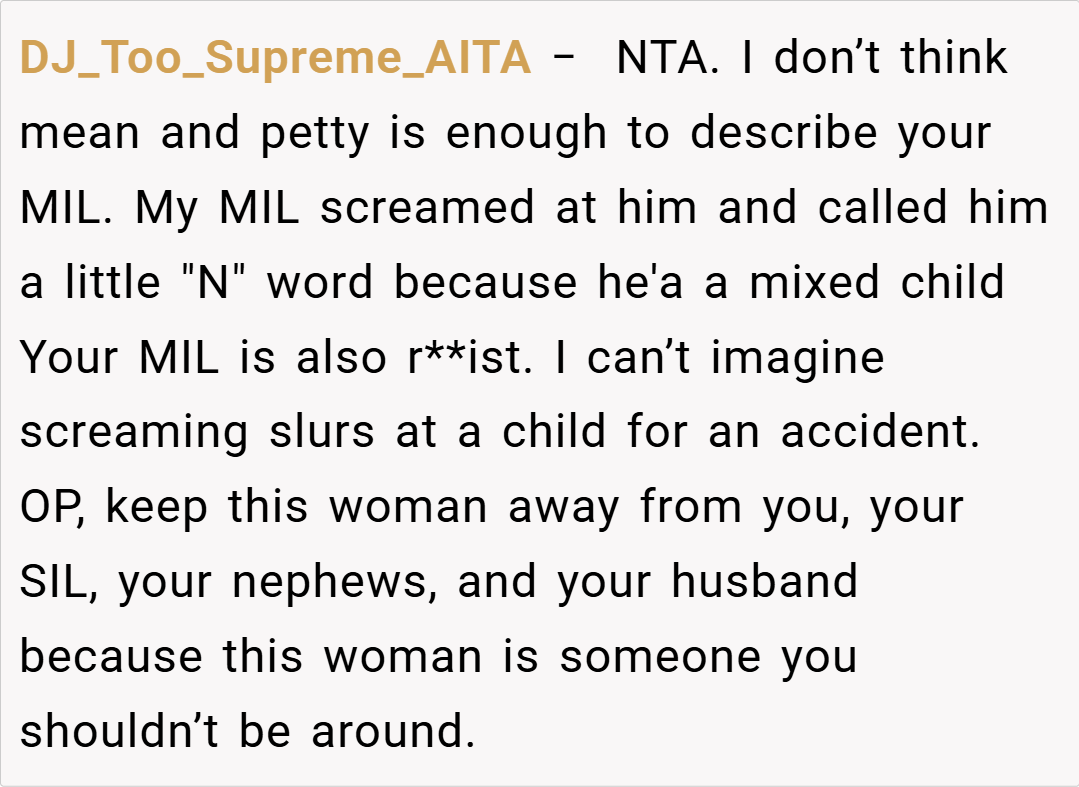
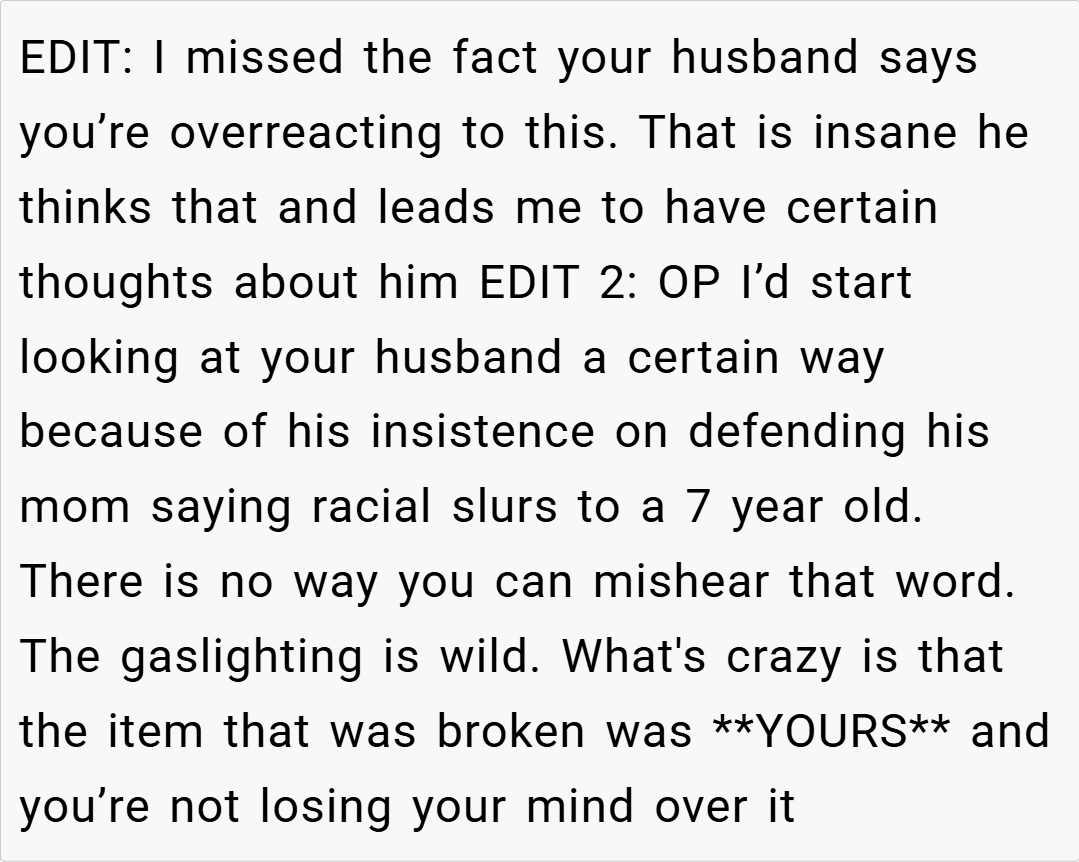
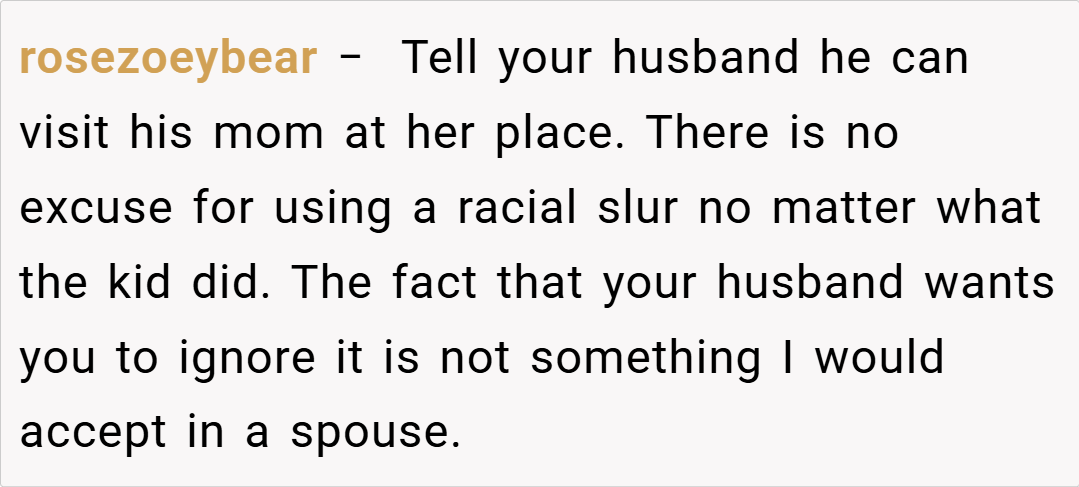


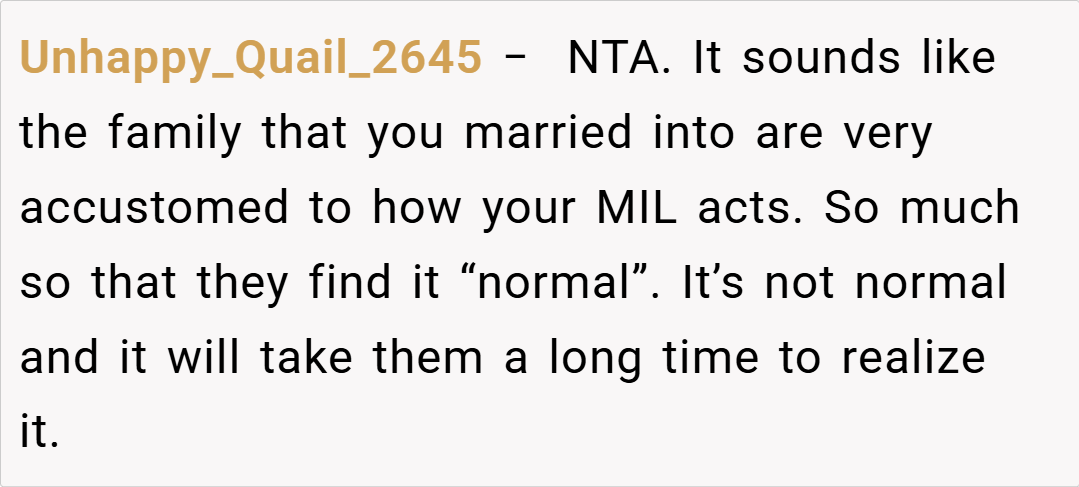
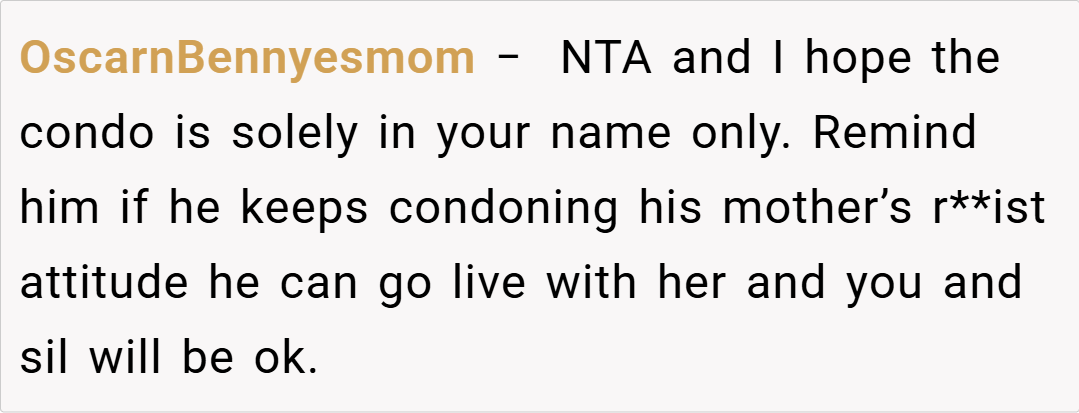
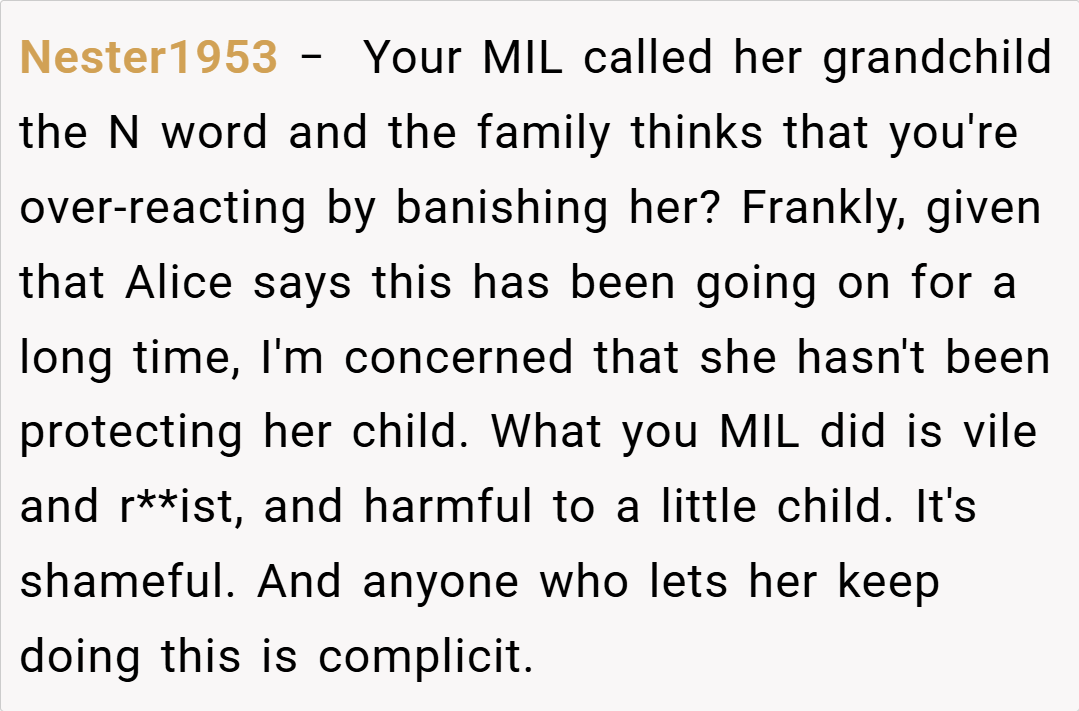
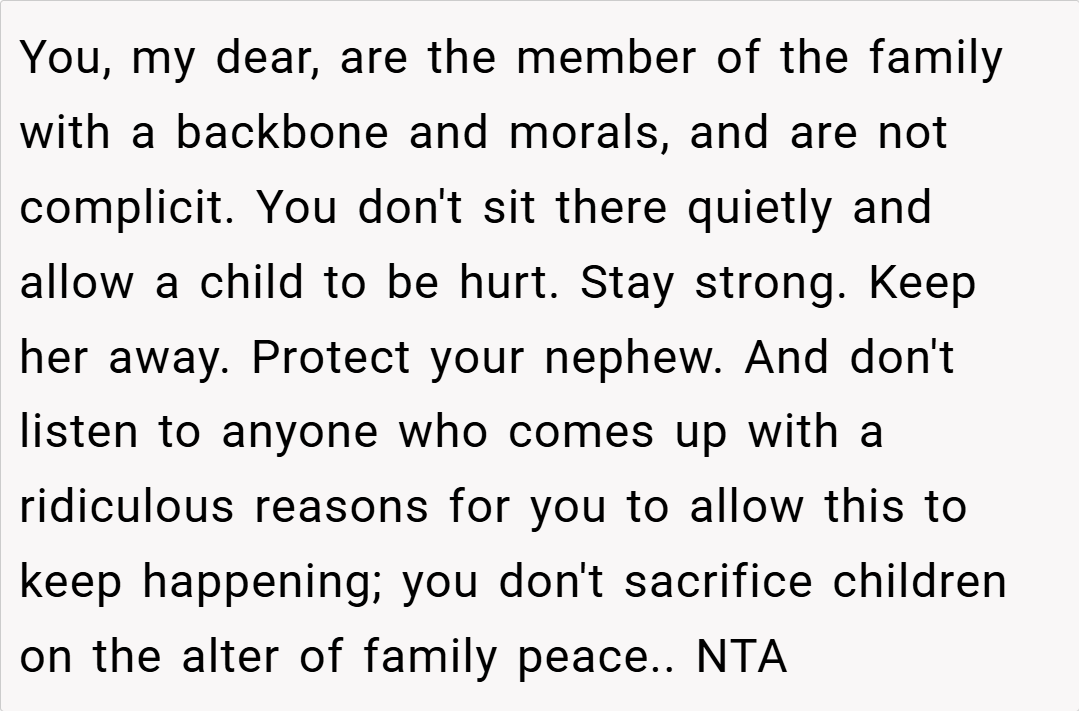
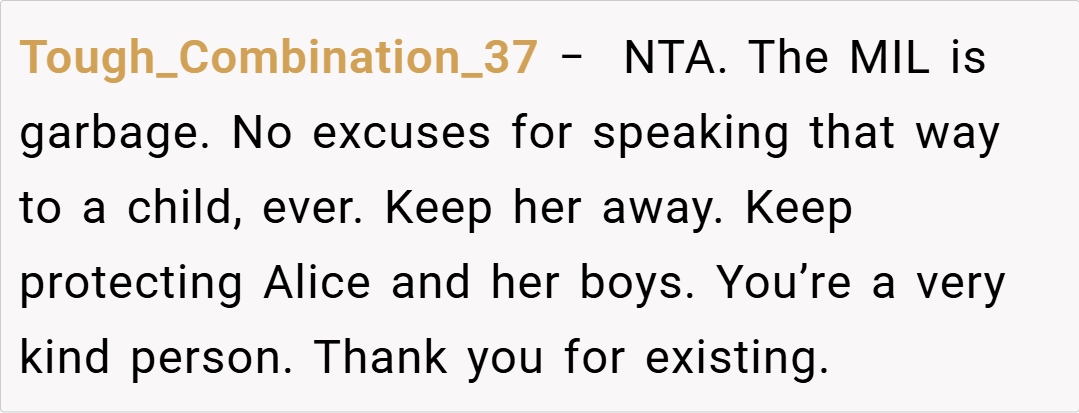
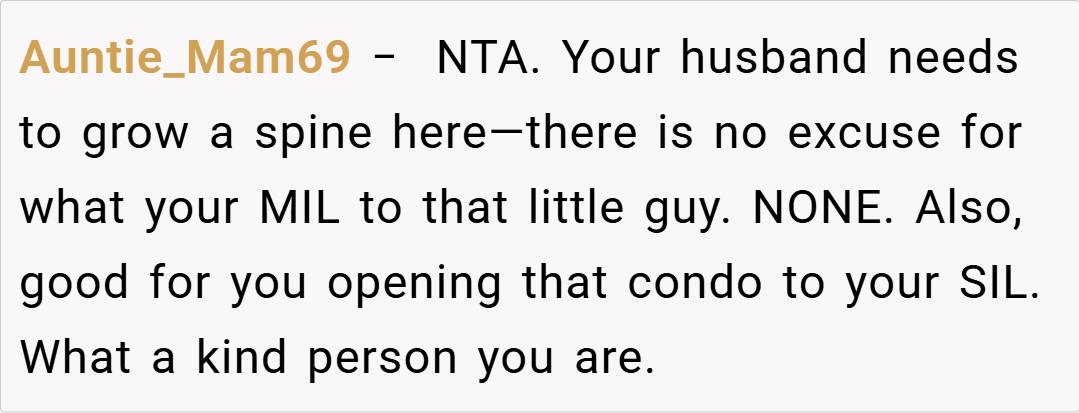

This story is a stark reminder that family loyalty should never come at the expense of safety and respect. When harmful language and behavior emerge—even from those closest to us—the need to establish firm boundaries becomes paramount.
While the fallout from this decision has divided the family, it also opens up a broader discussion about accountability, racism, and the true meaning of protection in familial relationships. What would you do if you were in the narrator’s shoes? Share your thoughts and experiences—let’s discuss how to balance familial bonds with the need for a safe, respectful environment.

